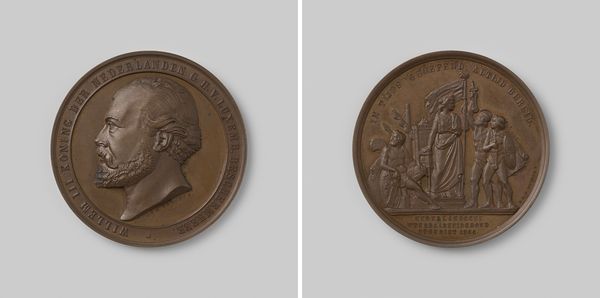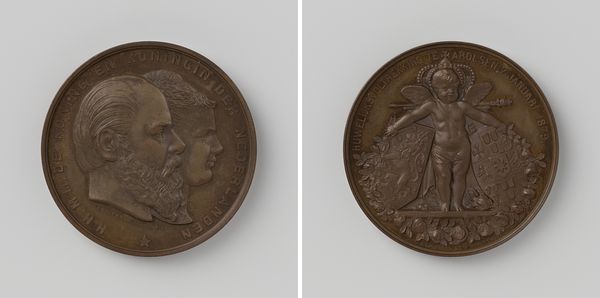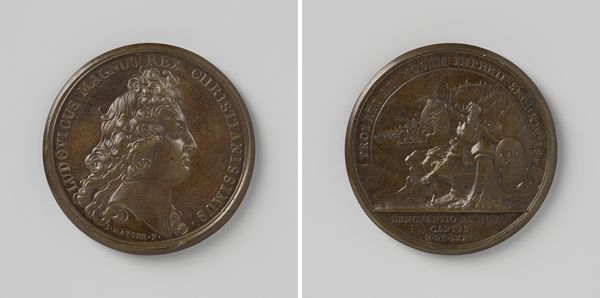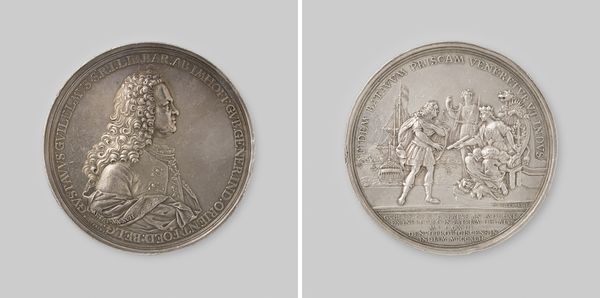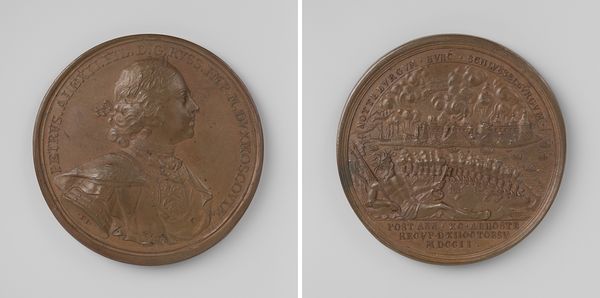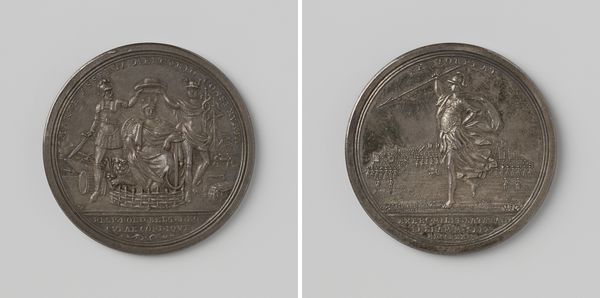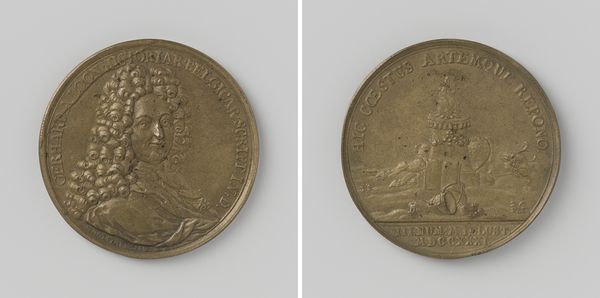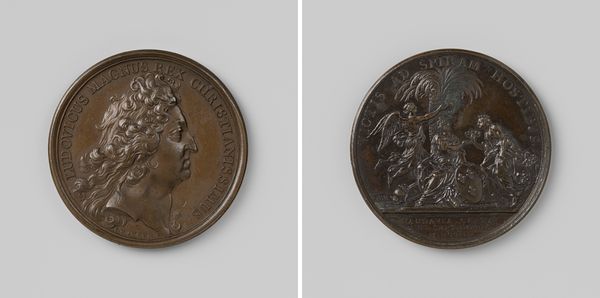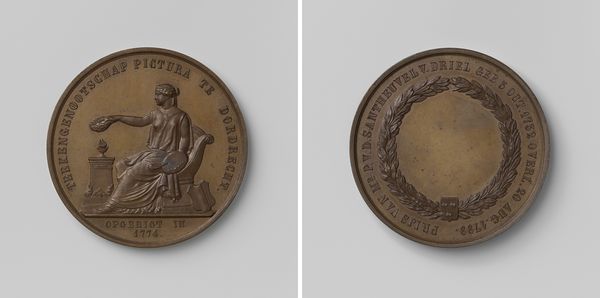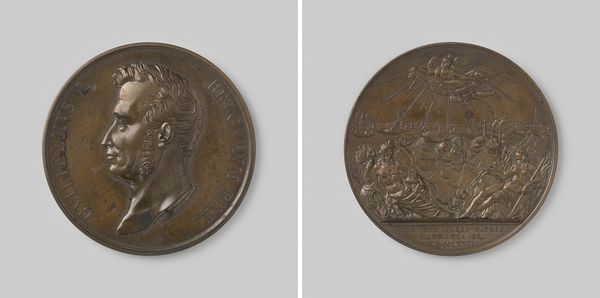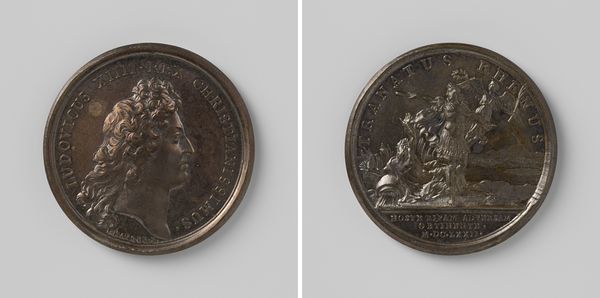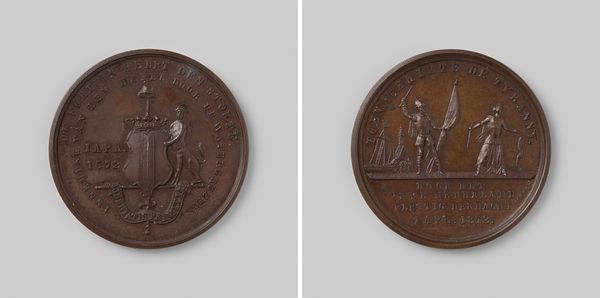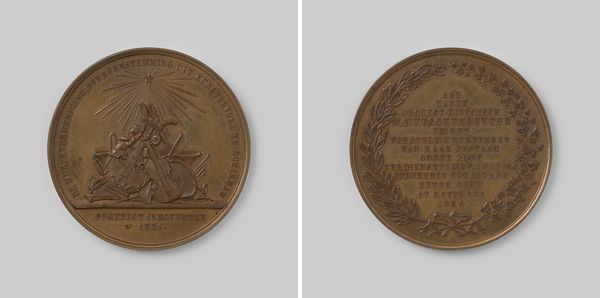
Droogmaking van de Haarlemmermeer, ter ere van Willem I, II en III, koningen der Nederlanden 1853
0:00
0:00
relief, bronze, sculpture
#
sculpture
#
relief
#
bronze
#
classicism
#
sculpture
#
history-painting
#
academic-art
Dimensions: diameter 5.2 cm, weight 73.59 gr
Copyright: Rijks Museum: Open Domain
Editor: This is "Droogmaking van de Haarlemmermeer, ter ere van Willem I, II en III, koningen der Nederlanden," a bronze relief created by Moses de Vries in 1853. The two sides of the coin feel incredibly different: one, austere with regal figures, and the other, allegorical. How would you interpret this piece? Curator: The composition reveals much. We see, first, a clear dichotomy in the organization of pictorial space on each side of the coin. The regal portraits present a rigid, almost stoic profile. Conversely, the allegorical side offers a dynamic scene with a kneeling figure, a seated goddess, and naturalistic elements. Editor: So, you’re seeing this tension entirely in the arrangement of the figures? Curator: Precisely. Observe how the formal repetition of the regal heads creates a sense of unity and authority, echoed by the coin's circular edge. Now shift to the second side, and note how the asymmetrical arrangement and the varied textures draw the eye in different directions. Consider also the surface finish; notice how light interacts with the high relief. Where is the focal point, structurally? Editor: It seems to guide you right to the seated goddess figure, through the light. That form gives it visual weight. Curator: Exactly. Note how it commands the visual field. That central position signifies its symbolic importance, anchoring the entire composition and driving home that the piece's core argument is found there. The arrangement also brings your eye to rest on the Haarlemmer lake. Editor: I never would have considered that. I appreciate seeing the coin as a construction. Curator: Focusing on the interplay of form and arrangement encourages us to look beyond historical narratives and truly "see" the artistic intent. We perceive the symbolic argument presented.
Comments
No comments
Be the first to comment and join the conversation on the ultimate creative platform.

